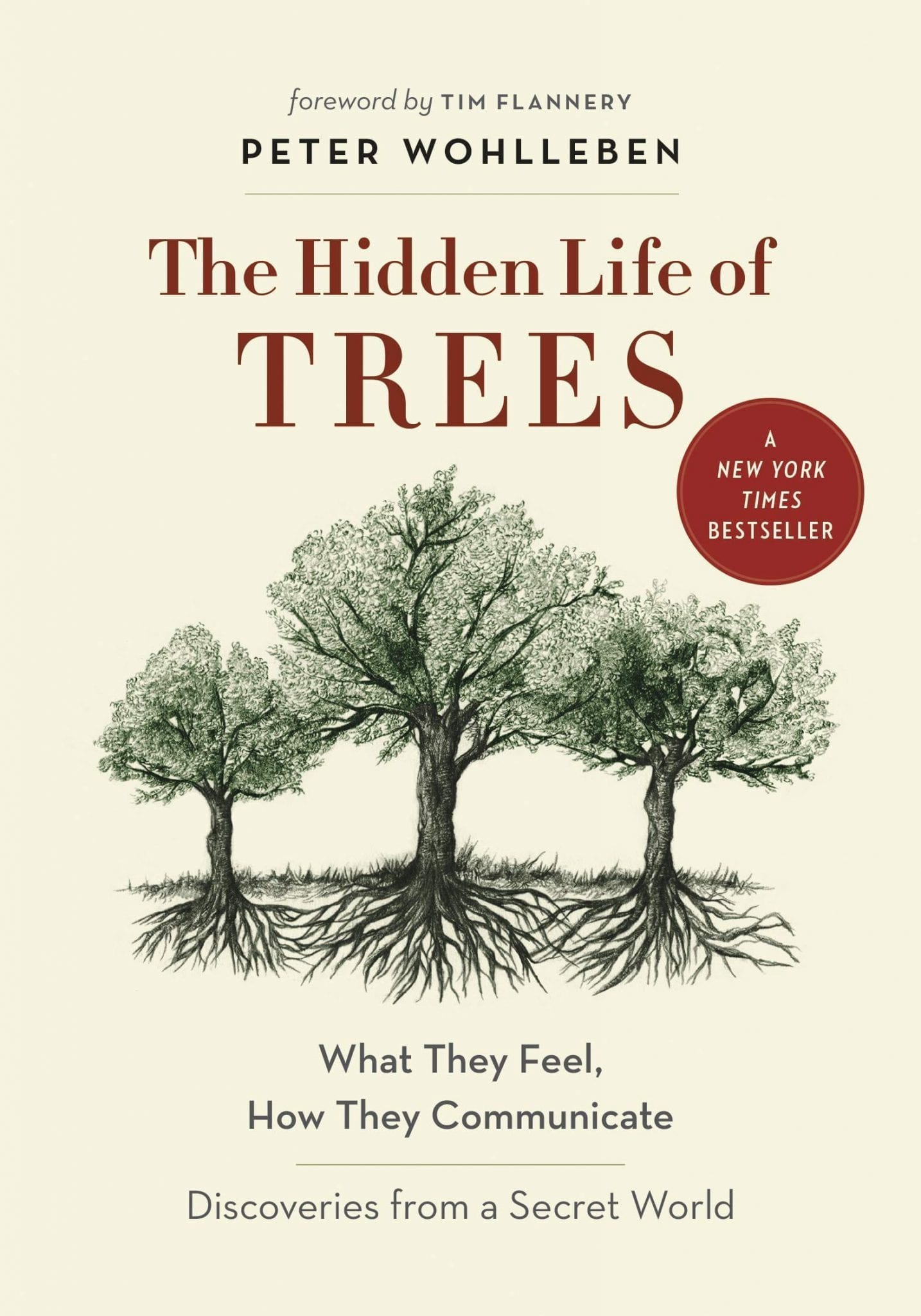“Trees can’t walk.” (p.186) Once seeds land and catch hold, or when saplings are planted and the trees begin their long journey of gradual growth over the years, decades and centuries, they stay in one place, until they die and decompose and go back to the earth and feed the next generation of trees, or until they are harvested and transported to distant lands to make furniture, products and buildings. Trees can’t just pick up their bags and mobilize their troops, like in the fantastical blockbuster rendition of The Lord of the Rings. Trees are sedentary creatures, once rooted (quite literally) – always rooted.

But even if they can’t walk, they sure can talk, claims German forester, Peter Wohlleben in his unexpected gem of a book The Hidden Life of Trees. Or at least they can talk to each other. Plunging into the magical world of trees – reminiscent at times of the stage for Hermann Hesse’s beautiful Fairy Tales that evoke the mysterious ways of the woods – Wohlleben describes how trees actually communicate amongst themselves: this is not an alphabet language as we know it but rather as almost secret codes based on chemicals, transmitters and scents that travel by air or bugs or via a network of fungi connecting the roots of trees.
For example, when a caterpillar takes a bite from a juicy green leaf, the leaf tissue sends out electrical signals, just as human tissue does when it is hurt “However, the signal is not transmitted in millseconds, as human signals are; instead, the plant signal travels at the slow speed of a third of an inch per minute.” (p.8) Trees really live the ‘slow lane’, Wohlleben asserts flippantly. Everything takes much longer, as if in slow motion externally, and yet inside the bark, the cambium (that life-giving layer just under the bark) is busy transporting water from the ground up through the outer layer of trunk to nourish the branches and leaves or needles in a process called xylem.
These are some of the fun things that we learn from these simple but basic concept of natural processes without having to read the dense texts of a school book. This is perhaps Wohlleben’s greatest achievement: through simple anecdotal language he brings to life the nature of trees and tickles our curiosity for a world that used to surround us when our ancestors lived in those woods that were inhabited by fairies and elves and demons and monsters. The Grimm Fairy Tales were inspired by the fear of living in such close proximity to those beings and ultimately by our fear of being around an essence that we cannot fully comprehend because we cannot see the forces that govern the life of trees.
Wohlleben describes the networks created in forest floors amongst the roots and the fungi that ransom sugars from the trees in return for transmitting chemical messages to their brethren through the soil; he depicts the race to the top to get the most light by the beech and spruce and pines because the sun is essential, indeed vital, for the incredible process of photosynthesis; he talks about the phytoncides that are pungent compounds that give that memorable smell to forests and that disinfect the air; and he tells of the mighty ‘quaking aspen’ in Utah that “has taken thousands of years to cover more than 100 acres and grow more than forty thousand trunks.” (p.184) You don’t believe me? Read the book!